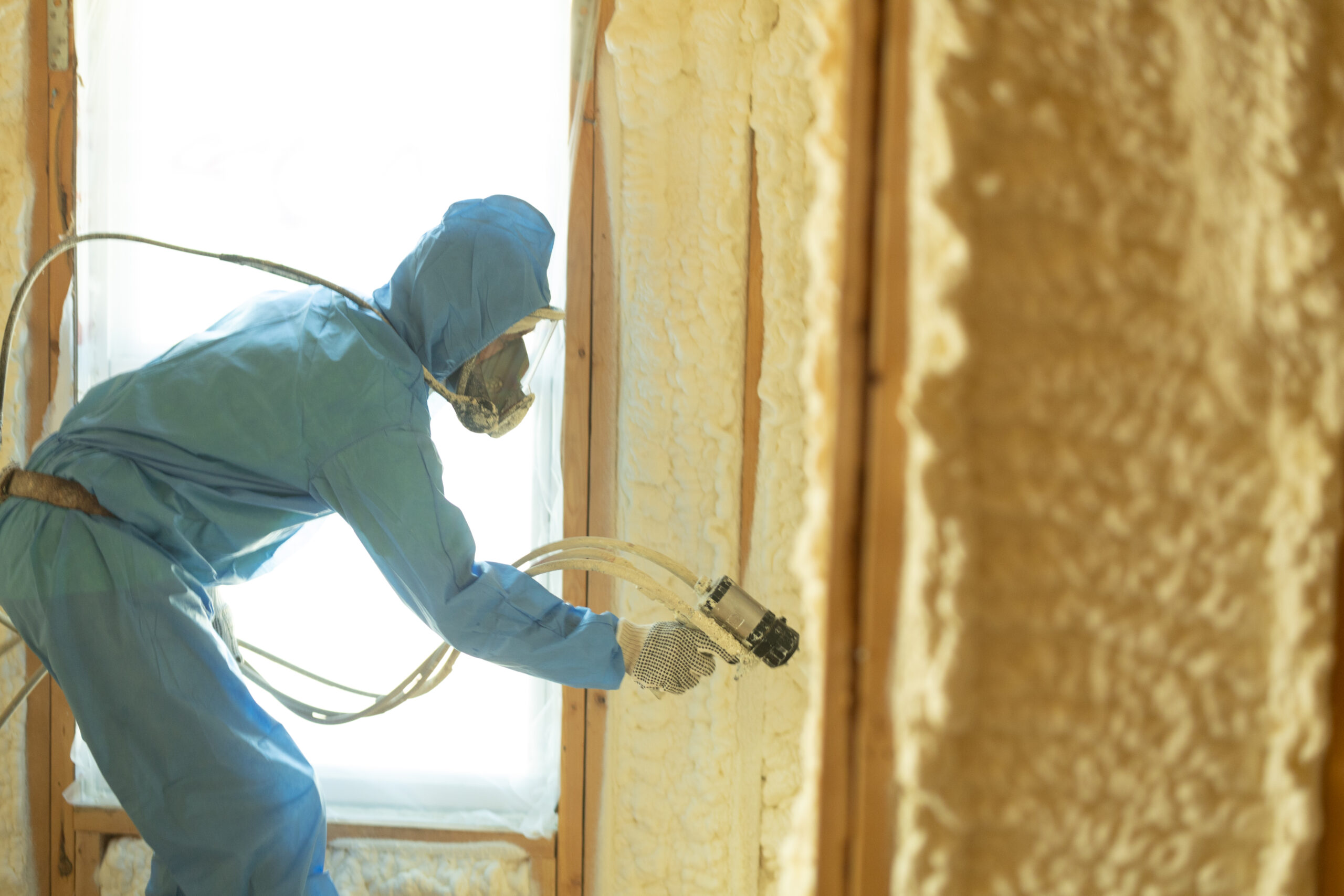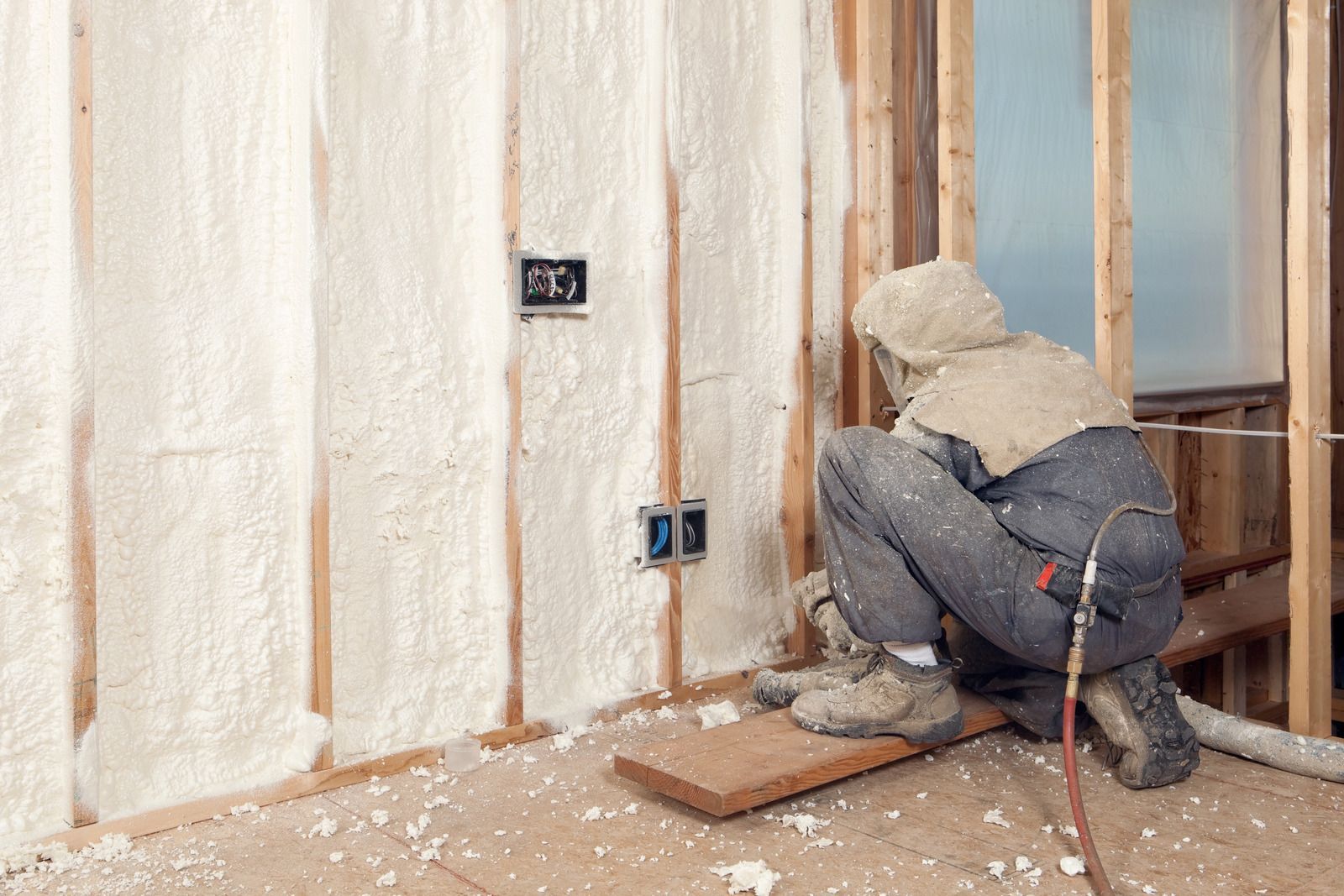The Role of Spray Foam Insulation in Home Safety and Health
Choosing the right insulation is about more than just energy savings. It's an investment in your home's health, safety, and durability.

When homeowners think about insulation, the first benefit that usually comes to mind is energy efficiency and lower utility bills. While that's a major advantage, it's only part of the story.A professional spray foam insulation contractor plays a direct role in improving a home’s safety and the health of its occupants. Spray foam provides structural reinforcement and fire-resistant properties that other insulation types can’t match. It also creates a powerful air and moisture barrier that seals the building envelope, preventing pollutants, allergens, and moisture from entering. This helps stop mold growth and significantly enhances indoor air quality.
This article will explore these often-overlooked safety and health advantages. The information is based on insights from seasoned professionals who work with these materials every day, helping homeowners create more comfortable and secure living spaces. Understanding these benefits provides a more complete picture of how insulation choices affect a home's environment.
Enhancing Structural Safety and Stability
Beyond its health benefits, spray foam insulation can also make a home physically safer by reinforcing its structure.
Strengthening the Building Envelope
Closed-cell spray foam is incredibly dense and, when applied, it adheres tightly to the surfaces it touches. This action essentially glues the building components together, such as wall studs and sheathing. The result is a significant increase in the racking strength of walls, making them more resistant to pressure from high winds or seismic events. In coastal areas or regions prone to severe weather, this added structural integrity can provide homeowners with extra peace of mind. Industry reports consistently show that buildings with reinforced envelopes perform much better during extreme weather events.

Fire Resistance Properties
While no insulation is completely fireproof, many spray foam products are manufactured with fire-retardant chemicals. These products are designed to meet strict building code requirements for fire safety. They won't sustain a flame and will self-extinguish when the heat source is removed. This can slow the spread of a fire, giving occupants more time to escape and potentially reducing the amount of damage.
Below is a look at how different insulation types generally perform in fire safety tests.
| Insulation Type | Fire Rating | Smoke Development | Notes |
|---|---|---|---|
| Spray Foam (with retardant) | Class 1 | Low | Self-extinguishes when flame is removed. |
| Fiberglass | Non-combustible | Low | Melts at high temperatures. |
| Cellulose (treated) | Class 1 | Moderate | Treated with borates for fire resistance. |
| Mineral Wool | Non-combustible | Very Low | Extremely high melting point. |
Creating a Healthier Indoor Environment
A significant portion of the air inside a home comes from unconditioned spaces like attics, crawl spaces, and wall cavities. Without a proper air seal, this air can bring a host of unwanted particles with it.
Improving Air Quality
Traditional insulation materials like fiberglass or cellulose can allow air to pass through them. Spray foam insulation, on the other hand, expands to fill every crack and gap, creating an airtight seal. This seal is a game-changer for indoor air quality. It blocks the entry of outdoor allergens like pollen, dust, and other pollutants that can aggravate asthma and other respiratory conditions. For families with sensitive individuals, reducing the infiltration of these airborne irritants can make a noticeable difference in their daily comfort. A recent study found that air pollutants can be two to five times more concentrated indoors than outdoors, making an effective air barrier an important part of a healthy home system.
Preventing Mold and Mildew Growth
Moisture is the primary ingredient for mold and mildew, which can cause serious health problems and structural damage. Closed-cell spray foam is a non-porous material, meaning it doesn't absorb water. When applied, it forms a continuous moisture barrier that prevents water vapor from passing through walls and ceilings. This is especially useful in humid climates or in moisture-prone areas like basements and crawl spaces. By keeping moisture out of the building assembly, spray foam eliminates the conditions necessary for mold to grow. Considering that professional mold remediation can cost thousands of dollars, preventing it from starting is a smart investment.
Deterring Pests
Pests like rodents and insects can find their way into a home through the smallest of openings, bringing with them germs and causing damage. Spray foam insulation creates a solid, impassable barrier. Once cured, closed-cell foam is rigid and difficult for pests to chew through. Unlike other insulation types that can be easily torn apart for nesting, spray foam seals entry points permanently, effectively closing the door on unwanted critters.
- Bonus Tip: Pay special attention to sealing areas where utilities enter the home, like pipes and wiring. These are common entry points for pests, and spray foam can seal these gaps completely.

Key Factors for Spray Foam Installation
Choosing the right insulation requires careful thought. Here are a few factors to keep in mind.
Open-Cell vs. Closed-Cell Foam
There are two main types of spray foam, and they have different properties. Open-cell foam is lighter, less dense, and a great air barrier and sound dampener. Closed-cell foam is rigid, dense, and serves as an air, moisture, and vapor barrier all in one. It also adds structural strength. The right choice depends on the application, climate, and budget. For example, closed-cell foam is often preferred for foundations and areas where moisture is a concern.
Professional Installation is Key
The benefits of spray foam are entirely dependent on proper installation. The chemicals need to be mixed at the correct temperature and ratio. If installed incorrectly, the foam may not cure properly and could release chemical odors. This is not a DIY project. Always hire a certified and experienced contractor who follows strict safety protocols. They will ensure the area is properly ventilated and that occupants are not present during the application and curing process.
- Bonus Tip: Ask potential contractors about their training, certifications, and what specific safety measures they take on a job site.
Understanding the Curing Process
During the application and for a period afterward (typically 24 hours), the area being insulated must be vacated. This allows the foam to fully cure and any volatile organic compounds (VOCs) to dissipate. A professional installer will manage this process and advise on when it is safe to re-enter the home. Proper ventilation with fans and air scrubbers is a standard part of a professional installation.
Questions About Spray Foam and Home Health
Here are answers to a few frequently asked questions about spray foam insulation.
Is spray foam insulation safe for people with chemical sensitivities?
Once fully cured, spray foam is inert and stable, meaning it does not release chemicals into the air. However, the installation process involves chemicals that can be irritating. People with severe sensitivities should discuss their concerns with the installation company and their doctor. Waiting longer than the standard 24 hours before re-entering the home may be a good precaution.
How long does the smell from new spray foam last?
When installed correctly, any smell should dissipate within 24 to 48 hours as the foam cures. A lingering chemical odor can be a sign of improper mixing or application. If an odor persists, contact the installation company immediately to investigate.
Does spray foam lose its effectiveness over time?
No, spray foam does not sag, settle, or break down over time like some other insulation materials. Its thermal and air-sealing properties remain consistent for the life of the building, making it a long-term solution.
Can spray foam be installed in an existing home?
Yes, spray foam is commonly used for retrofitting existing homes. Professionals can inject it into wall cavities, attics, and crawl spaces to improve the performance of an older house. The process is minimally invasive and highly effective.
What happens if spray foam gets wet?
Closed-cell spray foam is waterproof and will not be damaged by water. It can help prevent water from reaching structural materials. Open-cell foam can absorb water if exposed to a direct leak, but it will dry out without losing its insulating properties, provided the source of the water is fixed.
Final Thoughts on Insulation and Your Home
Choosing the right insulation is about more than just energy savings. It's an investment in your home's health, safety, and durability. By forming an effective barrier against air, moisture, and pests, spray foam insulation services help improve indoor air quality and protect the building’s structure from mold and decay. Its ability to strengthen walls and resist fire adds an extra layer of safety. Before making a decision, homeowners should evaluate their property’s specific needs, consider the local climate, and think about their long-term goals for comfort and protection.For those who decide these benefits are right for their home, the next step is finding a qualified expert.
Getting Professional Guidance
Consulting with experienced professionals is a good way for homeowners to understand how spray foam insulation could work for their specific property. A company specializing in this area, like H&R Spray Foam Insulation, can provide a thorough assessment and explain the options best suited for a home’s unique conditions. Their teams are equipped to answer questions about material safety, the installation process, and long-term performance. For specific information or to schedule a consultation, interested parties can contact them at info@hrfoam.com or (512)862-9637.
Author: With 15 years of banking experience and five years managing H&R Spray Foam Insulation, Edith is passionate about building strong relationships with customers. Her favorite part of the role is connecting with clients and ensuring their needs are met as she works alongside them to improve the health, comfort, and energy efficiency of their homes.
Reviewer: With 7 years in the spray foam insulation business, Ella Adams offered useful feedback on this post, helping make sure the tips were both realistic and easy to apply.